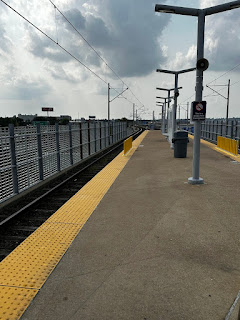“Abundance” is the buzzword of the day in many progressive intellectual circles – and with good reason. What the idea of abundance is all about is building more of the good things we need: housing, clean transportation, renewable energy facilities. Liberals, environmental advocates, and transportation reformers have become so good at stopping bad projects – so the argument goes – that as a nation we can no longer efficiently build good projects. And we have layered so many requirements on design and construction – all important in their own right – that construction has become prohibitively expensive.
The leading text of what has become known as the “abundance movement” is the book simply called “Abundance,” by Ezra Klein and Derek Thompson (Avid Reader Press). (For an introduction to the “movement,” see this website.) Did you ever read a book and say to yourself, “I wish I had written that!” That was my reaction on reading “Abundance.” Klein and Thompson lay out, in clear prose, with lots of stories (and statistics and footnotes if you want those) how we got into this mess and why we need to get out of it ASAP (think climate emergency).
Klein and Thompson analyze in painful detail the failure (at least so far) of California’s High Speed Rail project, what they call “No-Speed Rail.” This project, managed by the California High Speed Rail Authority, has been beset by every ill that project managers fear: schedule slowdowns, cost overruns, right-of-way disputes, lawsuits, and political infighting on and off since 1982. The authors summarize the grim reality:
“The project is caught in a strange limbo between political fantasy and physical fact. The agency doesn’t have anywhere near the money or political capital it would need to complete the Los Angeles-to-San Francisco system Californians actually want. It doesn’t even have the money to complete the Bakersfield-to-Merced system that [Governor Gavin] Newsom proposed. It has no line of sight on how it will get that money or that political capital. But since it has some money and some political capital, it is building anyway, in the hopes that Californians will want to finish what they started.”
My main criticism of Klein and Thompson is that they give too little credit to the Biden Administration, which not only adopted most of the policy direction they are advocating but succeeded in getting Congress (with a razor-thin majority in the Senate) to pass major legislation, backed by billions of dollars, to implement it. Yes, the pace of implementation was much slower than some of us hoped for, and much of the progress already achieved is being rolled back by the Republicans. And some of the toughest problems (notably how to break the environmental/productivity/cost bottleneck) were not wrestled to the ground. But many problems outlined in Abundance were addressed.
One small example is the need for “clean” cement. As the authors point out, the manufacture of cement – needed in growing amounts for growth around the world – is a major contributor to climate change due to the carbon dioxide released in the manufacturing process. They call for new efforts to stimulate research and development of new cement production techniques. What they don’t point out is that the Biden Administration designed and began to implement a program to do just that. Sadly, that program has come to a screeching halt in the new Republican administration. In one of the program’s initiatives, for instance, the National Ready Mixed Concrete Association, the main industry trade group, was in the process of implementing a five-year program, funded by a $9.63 million grant from the U. S. Environmental Protection Agency, to “help concrete producers reduce the carbon footprint of concrete by 50% by 2028 from 2014 levels and achieve carbon neutrality by 2045.” That funding has now been stopped.
Kudos to Klein and Thompson for crystalling this very important issue. If we had had another Biden (or Harris) administration, with working majorities in Congress, we might be making great strides toward abundance today. But we don’t. So, time to put our heads down and keep grinding.










